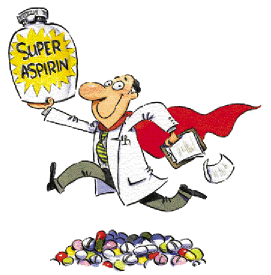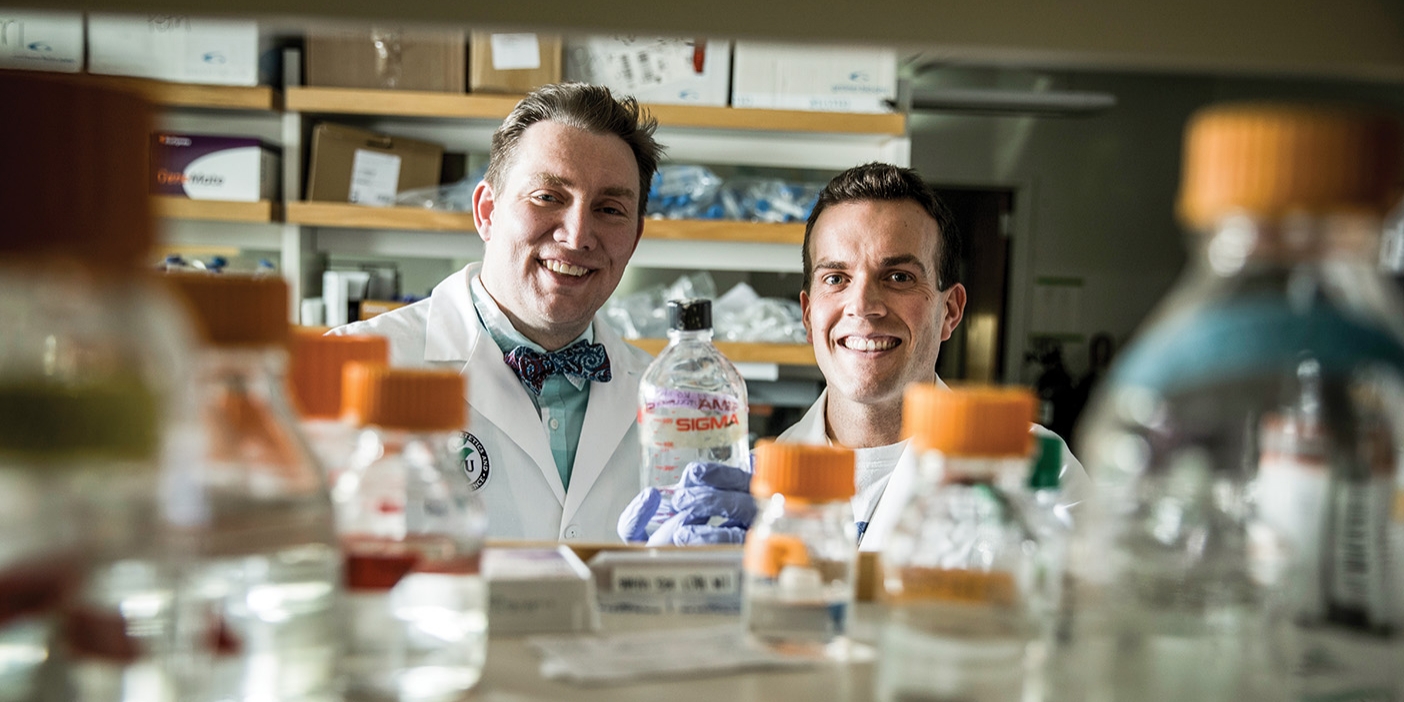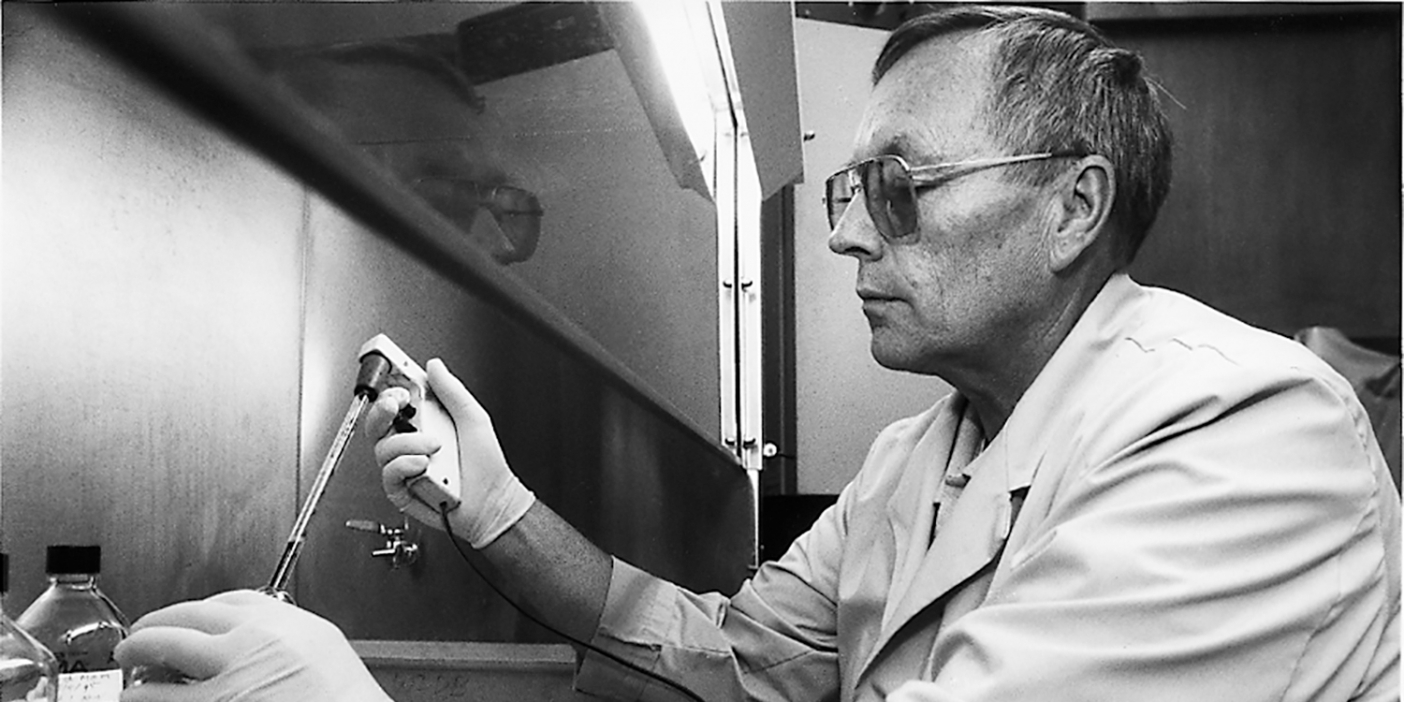By Peter Gardner
Every day, all over the world, thousands of people suffering from arthritis and other chronic health problems face a difficult decision: Should they take an aspirin or aspirin-like product to relieve their pain, or should they endure the pain, avoiding the bleeding ulcers and other serious stomach problems that such products can create?
Thanks to a 1991 discovery by a BYU associate professor of chemistry, that decision is about to become easier. Building on Daniel L. Simmons’ research, Merck and Monsanto, two major pharmaceutical companies, both announced on Nov. 10, 1998, that they had tested final versions of what are being called “superaspirins,” products the companies claim can reduce fever and inflammation and relieve pain–without danger to the stomach. These products and the discovery that made them possible have caught the world’s attention in publications like Time, The Wall Street Journal, and The New York Times.
 The 1991 discovery that caused all this excitement came while Simmons was studying cancer at BYU. Simmons, now the director of BYU’s Cancer Research Center, identified an enzyme, later known as cyclooxygenase 2 (COX-2), that increases within cells as they become cancerous. The discovery has great relevance for cancer research, and it has far-reaching implications in other areas as well. “It was clear as soon as we identified it that this would have a very significant impact on our understanding of aspirin and aspirin-like drugs,” he says.
The 1991 discovery that caused all this excitement came while Simmons was studying cancer at BYU. Simmons, now the director of BYU’s Cancer Research Center, identified an enzyme, later known as cyclooxygenase 2 (COX-2), that increases within cells as they become cancerous. The discovery has great relevance for cancer research, and it has far-reaching implications in other areas as well. “It was clear as soon as we identified it that this would have a very significant impact on our understanding of aspirin and aspirin-like drugs,” he says.
Before Simmons’ discovery, scientists believed that there was just one COX enzyme (COX-1) involved in a myriad of bodily processes including pain, inflammation, fever, blood-clotting, and stomach-wall protection. “When I saw we had another COX enzyme, I about shot through the roof,” he says.
The differences between the two enzymes are important. COX-1 is essential for blood clotting and for protecting the stomach. COX-2 is the key player in inflammation, pain, and fever. Aspirin inhibits both COX enzymes indiscriminately, lowering pain, inflammation, and fever but leaving the stomach unprotected. A drug that inhibits only COX-2 could reduce the problems without disturbing the stomach.
Simmons’ report and later, similar studies by researchers at UCLA and the University of Rochester were published in 1991. Since then, pharmaceutical companies have been racing to develop the first superaspirins.
The first of these aspirins received FDA approval in December 1998 and could be available by early 1999. These first drugs will have perhaps 100-fold selectivity for COX-2, meaning they will be 100 times more potent in inhibiting COX-2 than COX-1. Simmons says there are already drugs in the pipeline that have 10,000-fold selectivity. Such drugs may effectively eliminate bleeding ulcers and other gastrointestinal side effects from aspirin use.
“Seven to eight thousand Americans die each year from internal bleeding caused by aspirin and aspirin-like anti-inflammatory drugs,” says Simmons, whose grandfather died of complications related to bleeding ulcers. He hopes the superaspirins will make that kind of suffering obsolete.
Simmons is also enthusiastic about other research involving COX-2. “There are a number of tantalizing pieces of data that lead us to believe that this enzyme is important in cancer,” he says. He expects to see the enzyme actively studied in research on gastrointestinal cancers and even Alzheimer’s disease.
For now, however, Simmons is pleased with the way his discovery has been applied. “These drugs could be a miracle for arthritis sufferers,” he says. “There is a subset of patients who currently don’t get any relief because they can’t take aspirin-like drugs. Those patients will greatly benefit by using these drugs.”









